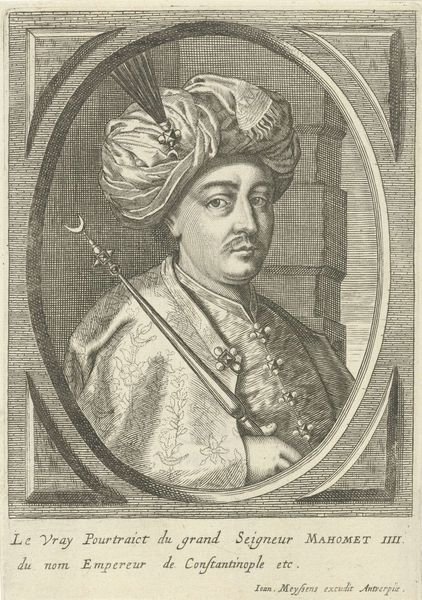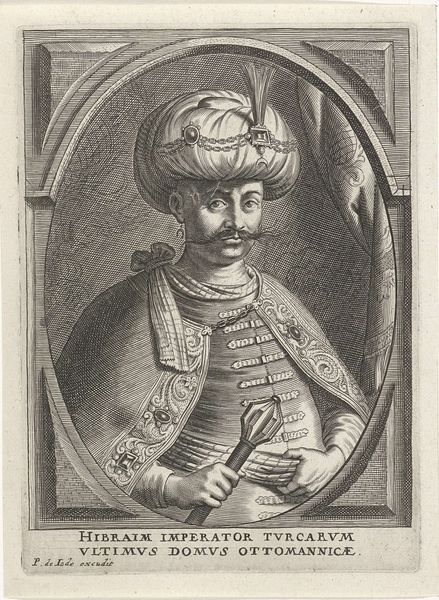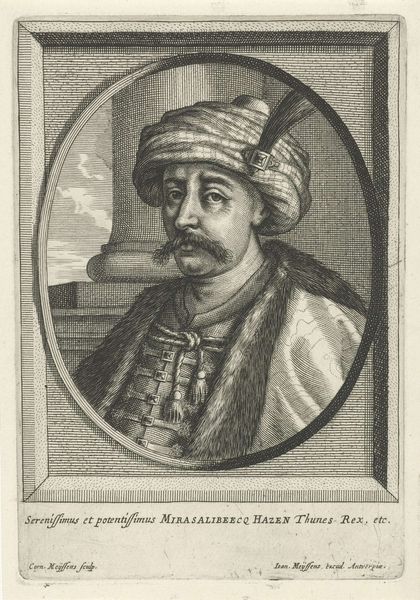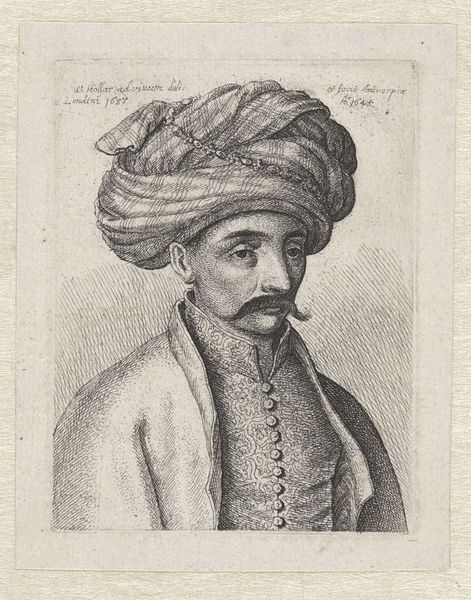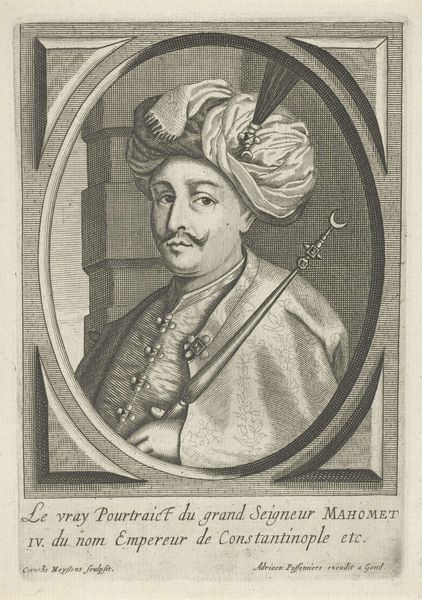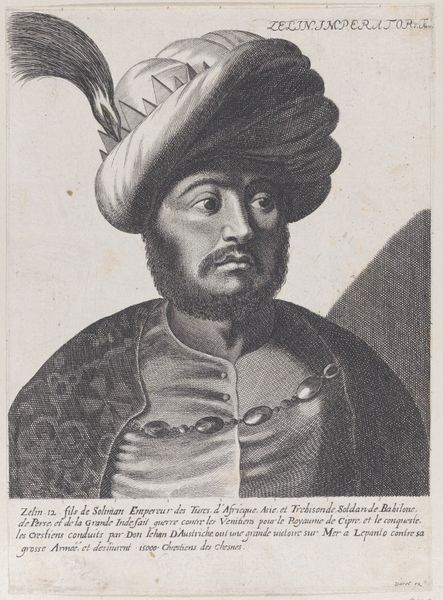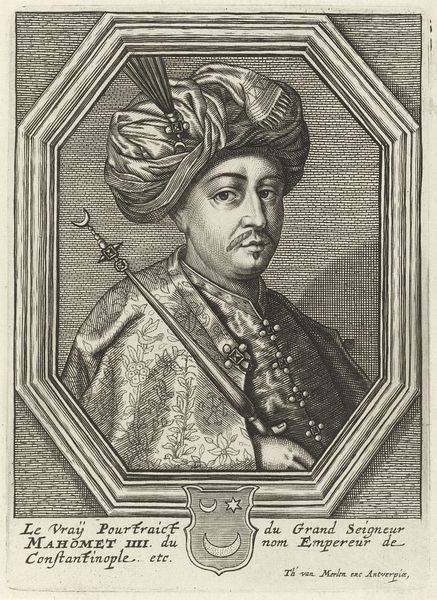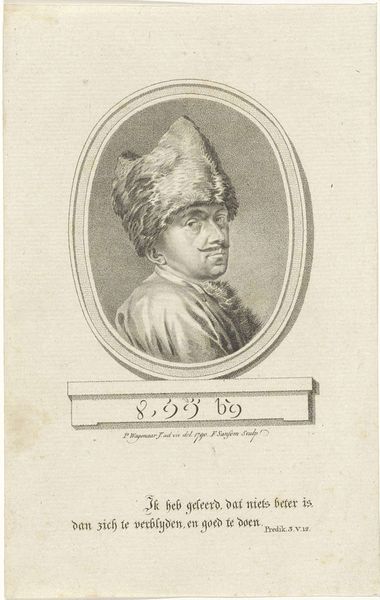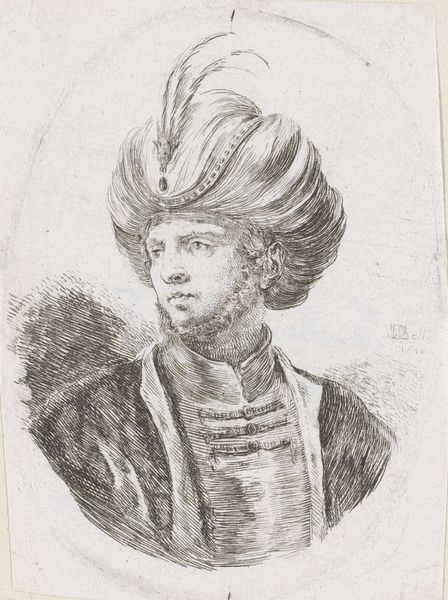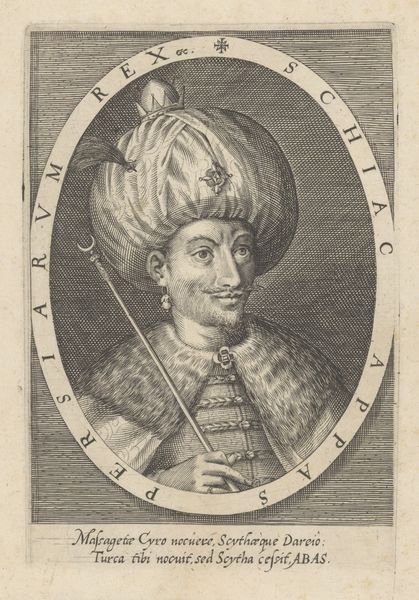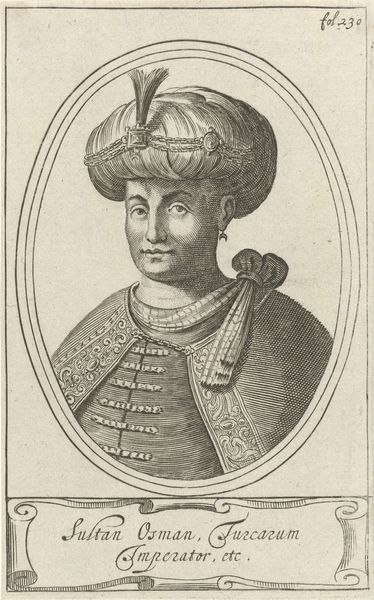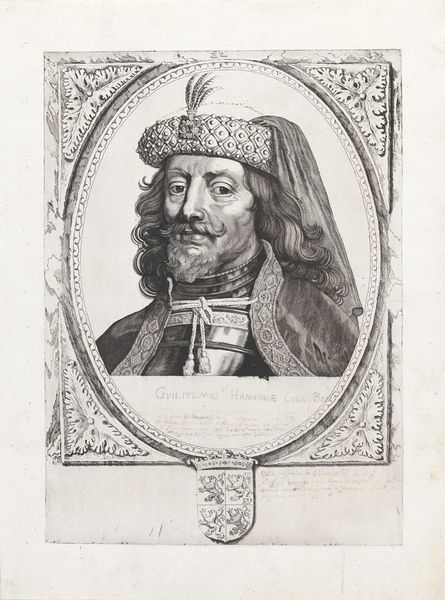
engraving
#
portrait
#
baroque
#
old engraving style
#
figuration
#
islamic-art
#
engraving
Dimensions: height 136 mm, width 88 mm
Copyright: Rijks Museum: Open Domain
Curator: This engraving on view here at the Rijksmuseum is titled "Portrait of a Persian Ruler" by Theodor Matham, made sometime between 1615 and 1676. It’s a remarkable example of Baroque portraiture, created using engraving techniques. What’s your immediate impression? Editor: Immediately, I'm struck by the detail achieved with such delicate lines, giving a sense of the opulence. His face seems somewhat melancholy despite all the finery – the turban, the ropes of jewels… It’s intriguing. Curator: The turban is indeed central. It symbolizes not just status, but also identity, rooting this figure in a very particular cultural milieu at a time when Western European perceptions of the "Orient" were heavily filtered through imagination and political strategy. Editor: Exactly. It speaks to the Western gaze itself. Engravings like these were circulated, shaping and solidifying stereotypes, but also piquing curiosity about far-off lands. I'm curious how this image was originally received, within its societal framework of both power and exoticism. Curator: I agree. Think about the intended audience, viewing this through a lens of exploration, perhaps anxiety, even commercial interest. It's so much more than just a picture of a man. The pearls are symbols of wisdom but here almost feel…flaunted. A ruler's virtue or simply a display of power? Editor: Precisely! It highlights the complicated politics embedded in representation. To me the engraving reads like a negotiation—or perhaps even a subtle conflict—between cultural admiration and underlying imperialistic drives. Curator: These kind of images really invite questions of cultural exchange and control that continue to reverberate even now, centuries after Matham put graver to copper. Editor: Indeed. And how powerful that these visual echoes still prompt us to unpack the layers of history, identity, and representation today.
Comments
No comments
Be the first to comment and join the conversation on the ultimate creative platform.
